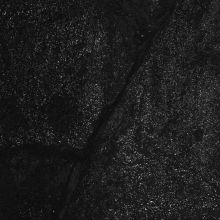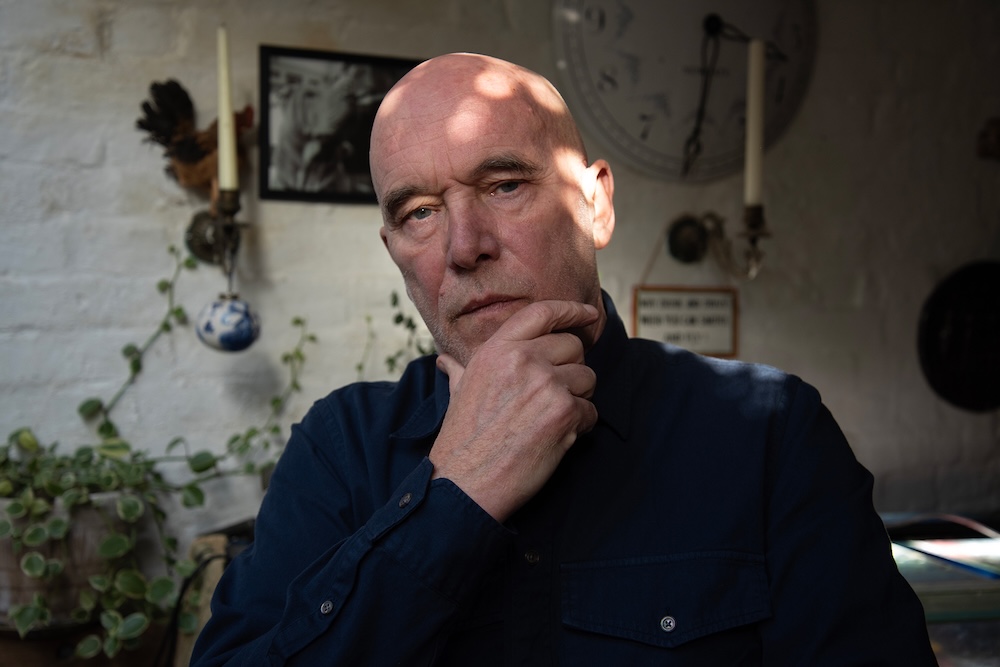Vessel – Order of Noise

Favourably named 22 year old Bristolian, Sebastian Gainsborough (like an English Gentleman ode to everyone’s favourite virile Frenchmen) piqued interest this year and last with releases on promising London label, Left_Blank: the ‘Standard EP’ and ‘Nylon Sunset EP’. The attention-grabbing ‘Nylon Sunset’ constituted vitreous textures defined by deep house gloss, dynamically broken up by jolts of tumultuous, polyrhythmic impact. Following the momentum of this promise comes Vessel’s debut on Tri-Angle records; the now relatively familiar (taking underground credit and blog hype as a measure) progenitors of a somnolent sonic identity often characterized by phantasmal ambient reveries and R & B samples manipulated into soprano-pitched affect, a la Burial; though, Tri-Angle’s agenda has been less ‘haunted rave’, more a host of inflections on R + B motifs, centred on hip hop (Clams Casino) or ambient structures (Balam Acab).
But, unlike the American contingency (as well as the like-minded exception; Liverpudlian Evian Christ) on Tri-Angle (others include How to Dress Well and oOoOO) Vessel’s ‘Order of Noise’ withholds a grittier aural anxiety tinted by industrial clamour and dissonance which comes as a welcome confluent of the silky, evocative gossamer that’s become synonymous with Tri-Angle’s roster to date, and contrastingly abrasive influences distinctly indicative of Gainsborough’s Bristolian origin and his membership of the Young Echo collective; virulent tinnitus and sunken accents which muddy the tropes of dubbed-out deep house into something less like a casual, inconsequential mood-furnishing into something more arrestingly volatile and fluid.
Brought together in this ‘confluence’ (whether consciously or not) is the public and the private, as currents are engineered that run through both escapist bedroom reclusion in its rustling, effect-heavy outset (‘Vizar’, ‘Stillborn Dub’) and frequent interspersion of these kind of abatements between another ‘current’: one of intense confrontation registered through rigid rhythms, both minimal and brutalist, which seem resonant with oppressive scenes, urban monoliths or more likely; darkened rooms and Funktion Ones (especially evocative of this is ‘Images of Bodies’). The dark solemnity evidenced suggests private, productive isolation with the overbearing sense of these ‘public’ environments and atmospheres firmly in tow. But, for all the evocation of harsh, oppressive space and sound, shaped often by piston-like dub-delineations, there also surfaces a release of miasmic respiration as if the impactful power of these delineations has yielded a vent in which these ambient breaths seep eerily through; a gaseous submergence after all of the brutal, violent chaos. This works to wondrous effect on ‘Silten’ as it begins shrilly with a ringing phone and a chiming bell, signalling an onslaught of viscerally located falls, before subsiding into brooding, coruscating airs.
As on ‘Silten’, Gainsborough generally seems to fleet sinuously between multifarious atmospheres and genres on ‘Order of Noise’. To reductively designate a generic framework; he’s occupying a sepulchral site in which elements of drone, ambient, dub, industrial, techno and house co-habit in an unsteadily rough combination. Contemporaneous comparisons could be made to Actress as evidenced in some of the automatized, portentous sounds (‘Ariel’) and Detroit-techno momentums (‘Plane Curves’) which are similarly frayed by static and disengaged from any concrete form; the seemingly processed unravelled by an unprocessed, primal production slant. But even so, there’s enough convincing idiosyncrasy besides these relations to put paid to any of these kinds of misgivings regarding originality or predictability. Instances of sumptuous vocals functioning as tonal interaction (rather than any reflective lyrical content; most of its indecipherable) with the dub-density are frequent, as is percussion which seems to function out of its own volition; arbitrary, factory–made clatters inundating the occasionally sedate glow Gainsborough conjures with an unpredictable, realistic edge (‘Silten’). Faintly reminiscent of Rhythm & Sound is outstanding highlight, ‘2 Moon Dub’; experimental dub which is less stark and bedimmed by vapour than R&S and brought into pacier, more immediate planes. By the time ‘Plane Curves’ and ‘Court of Lions’ are reached, these planes have become momentously otherworldly. Then, with the brief frictional fragments of ‘Scarletta’ and ‘Temples’, as with most of what features here, the sounds are atomized so even within the industrially inflected dub-descents and rhythms, you still hear the slighter elements it rests on; percussive clatters, accompanying sibilance and a plenitude of other elements contributing to a detailed, subterranean world which is sometimes rich, sometimes manically uneasy in the depths it finds itself in (uneasy in the good, intentional sense)
‘Villaine’ ends proceedings sounding initially similar to ‘Laura Palmer’s Theme’ (Twin Peaks OST) with a Beth Gibbon soundalike, albeit less noir-crisp and instead, bent out of shape by torrid whips. Though even with this torridity, it’s a plangent end to an exhilarating trail which aptly reflects the opaque, cracked black, but subtly grainy hue of Kathryn Politis’ artwork; searing, dark density, split in terms of form, but still finely realised. To position it in proximity to recent developments, it’s somewhat possessive of the somnifacient sound of your briefly pervasive, late-2000’s ‘bedroom’ producers but is convincingly compounded with industrial rigidity and leftfield fluidity, thereby supplanting any predictability with what makes more experimental electronic music’s transcendence of templates engaging. Above all it's the sound of dark environs explored, with every particle formidably emphasized.


















Must Reads
David Holmes – Humanity As An Act Of Resistance in three chapters
As a nation, the Irish have always had a profound relationship with the people of Palestine
Rotterdam – A City which Bounces Back
The Dutch city is in a state of constant revival
Going Remote.
Home swapping as a lifestyle choice
Trending track
Vels d’Èter
Glass Isle
Shop NowDreaming
Timothy Clerkin
Shop Now